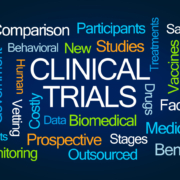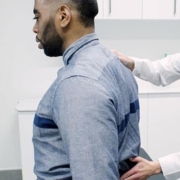Spinal Degeneration in the Aging Spine, What to Expect and How to Cope
Aging is a natural part of life, and with it comes changes in the body that affect our bones, joints, and overall mobility. One of the most common age-related issues is spinal degeneration, a condition where the structures of the spine such as the vertebrae, discs, and joints begin to wear down over time. While this process is normal, it can lead to discomfort, stiffness, and even chronic pain if not managed properly. Understanding what to expect and how to cope with these changes can make a big difference in maintaining a healthy, active lifestyle.
What Is Spinal Degeneration?
Spinal degeneration refers to the gradual breakdown of spinal structures. It usually involves the intervertebral discs losing hydration, becoming thinner, and less flexible. This loss of cushioning between the vertebrae often leads to increased pressure on the spinal joints and nerves. Over time, this wear and tear can cause arthritis in the spine (spondylosis), herniated discs, or narrowing of the spinal canal (spinal stenosis).
Common Symptoms of Spinal Degeneration
The signs of spinal degeneration can vary depending on which part of the spine is affected. Some people experience mild stiffness, while others may develop more severe nerve-related pain. Common symptoms include:
- Persistent back or neck pain
- Stiffness, especially in the morning or after periods of inactivity
- Radiating pain into the arms or legs (sciatica)
- Numbness or tingling in the extremities
- Reduced flexibility and range of motion
- Muscle weakness due to nerve compression
Not everyone will experience all of these symptoms, but they tend to progress as the degeneration worsens with age.
Causes and Risk Factors
While aging is the most common cause of spinal degeneration, other factors can accelerate the process. These include:
- Genetics: Family history plays a role in disc health and joint wear.
- Lifestyle habits: Smoking, poor posture, and lack of exercise can worsen spinal changes.
- Injuries: Previous spinal trauma can speed up degeneration.
- Obesity: Excess body weight places more strain on spinal discs and joints.
- Occupational stress: Jobs involving heavy lifting, repetitive motions, or long hours of sitting contribute to wear and tear.
What to Expect as You Age
It’s important to note that nearly everyone will develop some degree of spinal degeneration as they age it’s part of the natural aging process. However, the severity and impact vary widely. Some people may only notice mild stiffness, while others may face significant pain and reduced mobility.
As the spine degenerates, it may lead to secondary conditions such as:
- Herniated discs – when a disc’s soft center pushes out through a crack.
- Spinal stenosis – narrowing of the spinal canal that compresses nerves.
- Osteoarthritis – degeneration of the cartilage within the spinal joints.
These conditions can significantly affect quality of life if not addressed.
How to Cope with Spinal Degeneration
The good news is that there are many effective strategies for managing spinal degeneration and slowing its progression. These include both lifestyle changes and professional treatments.
1. Stay Active
Low-impact exercises like walking, swimming, or yoga help maintain spinal flexibility and strengthen supporting muscles. Movement also improves blood flow, which keeps discs healthier.
2. Practice Good Posture
Maintaining proper posture reduces stress on the spine. Use ergonomic chairs, adjust computer screens to eye level, and avoid prolonged slouching.
3. Physical Therapy and Chiropractic Care
Hands-on care can restore mobility, reduce stiffness, and relieve nerve pressure. Chiropractors and physical therapists provide targeted treatments, stretching routines, and strengthening exercises tailored to your needs.
4. Maintain a Healthy Weight
Shedding extra pounds reduces pressure on the spine and joints, lowering pain and slowing degeneration.
5. Pain Management Techniques
Heat and ice therapy, massage, and relaxation techniques can ease discomfort. In some cases, over-the-counter or prescribed medications may help manage pain.
6. Advanced Treatment Options
For severe cases of spinal degeneration, treatments such as spinal injections, decompression therapy, or even minimally invasive surgery may be necessary. These are typically recommended when conservative approaches do not provide enough relief.
Preventing Further Degeneration
Although you can’t stop the aging process, you can slow down spinal degeneration by making smart choices early. Regular exercise, staying hydrated, avoiding smoking, and maintaining spinal alignment through chiropractic care all contribute to long-term spinal health.
Living Well with Spinal Degeneration
A diagnosis of spinal degeneration does not mean you must give up the activities you love. With the right approach, you can manage symptoms, improve mobility, and continue leading an active lifestyle. The key lies in early recognition, consistent self-care, and working with healthcare professionals to find the best strategies for your condition.
Final Thoughts
Spinal degeneration is a natural part of aging, but it doesn’t have to define your quality of life. By understanding what to expect and implementing proactive coping strategies, you can reduce pain, maintain mobility, and age with strength and confidence. Taking care of your spine today will allow you to enjoy a healthier, more active tomorrow.









